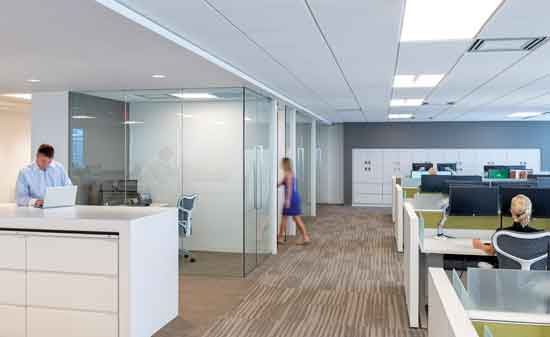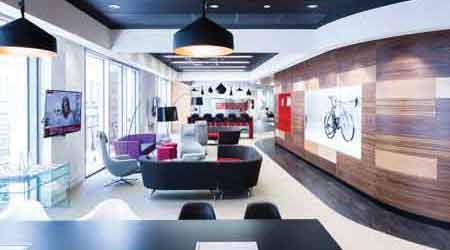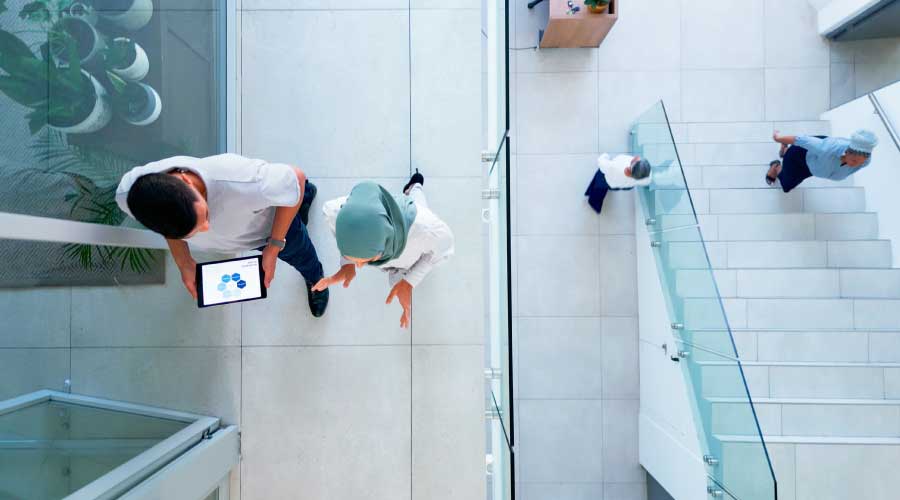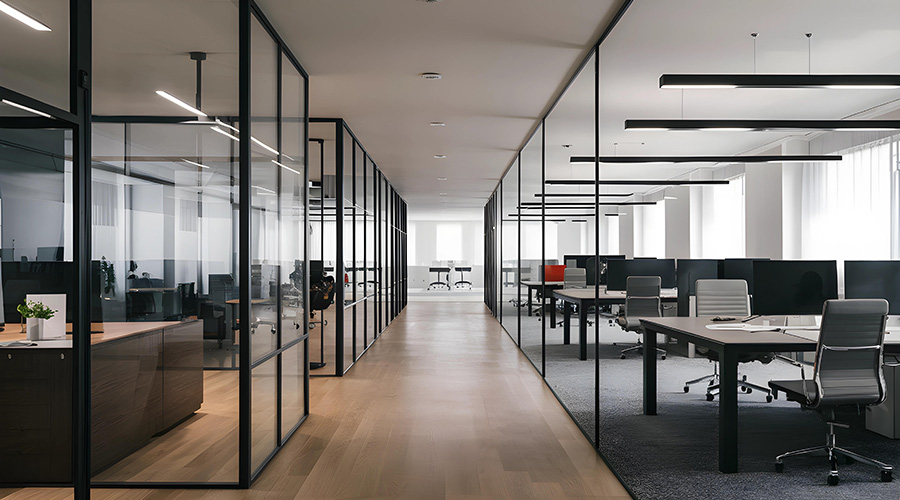Tip: Provide Different Work Environments For Different Types of Work
Part 2 of a 2-part article on the changing nature of office space design.
Part of the effect of creating different work environments is that it changes the energy in the office. Alex Spilger, senior vice president of project and development services with Cushman & Wakefield, cautions that it’s always easier to find a quiet space to work, or even work from home, when heads-down work needs to happen in a high-energy office, but it’s very difficult to inject energy into a space that is physically configured to be low energy. “If you have a space that’s overcompensating on the quiet, private-office side, you can’t get that energy when you want it,” he says.
It is a shift that requires breaking out of an older generation’s approach to hierarchy and achievement in the office space. “Millennials work in different ways than Baby Boomers,” Spilger says. Dismantling the notion that a big office equals power will play better in some sectors than others, but the benefit to high-performance is clear. “As that entitlement breaks down, what companies will be able to do more and more is reduce the number of personal spaces they’re allocating and reinvest into more effective and collaborative social spaces,” says Charnotskaia.

Caption: By providing a variety of work zones, office design can help employees be most productive with their task at hand. Photo credit: Gensler.
The focus on the people in an office has naturally led to weaving active design strategies into high-performance spaces. You can have the cleanest air, but if your ergonomics set-up is off, or your employees are chained to their desks, the space is not achieving maximum potential, Spilger says. When motion does occur, it’s usually in 2D with people circulating around a floorplate, he says. One way to improve the performance of the office space is to add the vertical dimension. In offices with a lot of space between the floor and the ceiling deck, a conference room might get capped at 8 feet, and Spilger’s team will set up a ladder and a lounge chair on top for a quiet nook. In a large floor plan, a gathering area might be sunken down to set it off from the rest of the space and sneak in a few extra steps. In one tech space, a column was turned into a climbing wall. On another project, Spilger negotiated with the building owner to give the tenant use of the roof, where a bocce ball court was installed. “It’s one of those things where once people are introduced to it, it’s hard to not want to go to that type of innovative office space,” Spilger says. “It doesn’t have to be open office, but moving beyond your typical cubicle farm and making the office a place of health and well-being.”
Social Space — This is the part of high-performance that might feel a little weird for facility managers. Organizations are coming to understand that in order to get the most out of them, their employees need to be healthy, engaged, and happy. Not “giddy about the free snacks in the breakroom” happy, though that helps. Actually happy. “They’re recognizing that people’s engagement and their happiness at work has a lot to do with their social relationships at work, and the trust they have in the organizations they work for,” Charnotskaia says. People who have a support network at work — a work best friend, even — are more resilient and make decisions faster, she says.
Develop an Eye for Detail
Facility managers are not matchmakers, but they do control the social spaces where such interactions occur. One quick tip: Provide really good coffee.
“Whether you drink coffee or not, coffee in the work environment seems to be the magic bullet,” Charnotskaia says. “But we’re also seeing operators at the building scale and also facility managers orchestrating events. Not just thinking about the amenities they provide, but thinking about how they create experiences in that environment that facilitate people connecting and being together. That more event-based, experience-based layer is becoming just as important as the physical environment itself.”
Another service seen more and more is a concierge function in offices, she says, doing everything from helping office workers get life done more efficiently to little touches like setting out a bowl of fresh apples every day. The attention to detail, from the physical systems to social nuances, and how they’re all tied back to the individual’s needs and preferences — that is the essence of high-performance office space.
“The space will be an attractant,” says Charnotskaia. “Not because I’m mandated, but because the tools and support and resources that I have there are unmatched, and I know I will be more effective in the office than I will be at any coffee shop, in my own home office, or really anywhere.”
Send comments and questions to naomi.millan@tradepress.com.
Related Topics:














